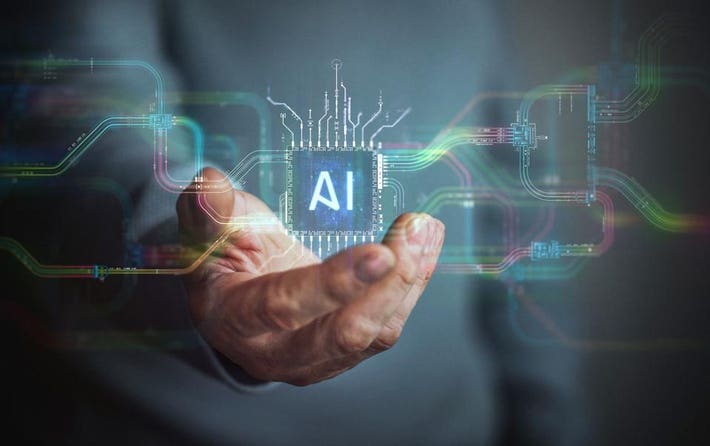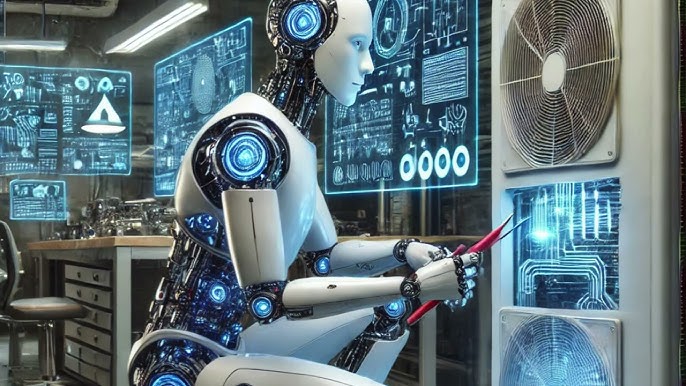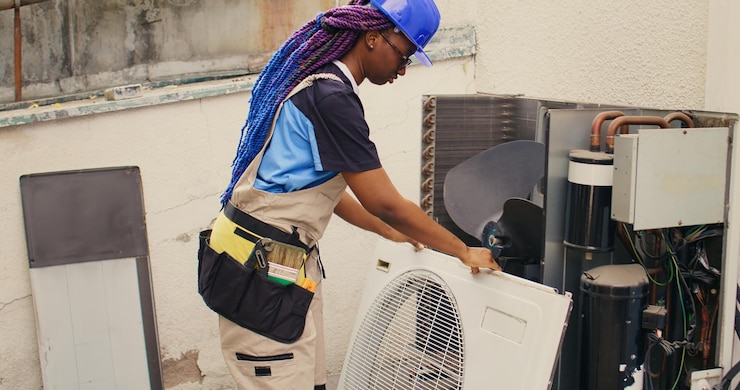In today’s fast-paced world, the integration of technology in various sectors has become indispensable. One such innovation is remote HVAC diagnostics using AI. This advancement is not only reshaping the HVAC industry but also setting new standards for efficiency and reliability. By combining artificial intelligence with remote diagnostics, companies can manage heating, ventilation, and air conditioning systems more effectively than ever before.

Understanding Remote HVAC Diagnostics
As HVAC systems become more complex, the need for precise and instant diagnostics grows. Traditional methods often involve manual inspections, which are time-consuming and prone to human error. However, with remote HVAC diagnostics using AI, the process is streamlined and much more accurate. AI algorithms can process vast amounts of data from HVAC systems in real-time, identifying potential issues before they become critical.
Benefits of Using AI in HVAC Diagnostics
Improved Efficiency
One of the primary benefits of integrating AI in HVAC diagnostics is improved efficiency. AI can analyze system performance continuously, allowing for adjustments that optimize energy use. This means lower energy bills and a reduced carbon footprint. For more insights on energy efficiency, check out this article.
Predictive Maintenance
AI-powered systems excel in predictive maintenance, which is crucial for preventing unexpected breakdowns. By predicting when a component is likely to fail, maintenance can be scheduled proactively, minimizing downtime and repair costs. This approach is explained in detail in HVAC Predictive Maintenance.
How AI Works in HVAC Systems
The integration of AI in HVAC systems involves several components. Sensors placed throughout the HVAC system collect data, which is then processed by AI algorithms. These algorithms analyze patterns and detect anomalies, providing insights that can be used to improve system performance.
Data Collection
Sensors are the backbone of AI-enabled HVAC systems. They gather data on temperature, humidity, airflow, and more. This information is crucial for understanding the system’s current state and identifying areas for improvement.
Machine Learning Algorithms
Machine learning is at the heart of AI diagnostics. By learning from historical data, these algorithms can predict future issues and suggest solutions. This ability to learn and adapt makes machine learning a powerful tool for remote HVAC diagnostics.
Case Studies: AI in Action
Several companies have successfully implemented AI in their HVAC systems. These case studies demonstrate the tangible benefits of this technology.
Residential Applications
In residential settings, AI has been used to optimize energy use and improve comfort levels. Smart thermostats, for example, learn user preferences and adjust settings automatically. This not only enhances comfort but also reduces energy consumption.
Commercial Applications
In commercial buildings, AI can manage complex HVAC systems more effectively than human operators. By analyzing data from multiple sensors, AI can ensure that every area of a building is comfortable and energy-efficient. For more on this topic, visit this article.
Challenges and Considerations
While the benefits of AI in HVAC diagnostics are clear, there are also challenges to consider. Implementing AI systems requires investment in technology and training. Additionally, data security is a concern, as these systems rely on cloud-based data processing.
Cost Implications
The initial cost of implementing AI can be significant. However, the long-term savings from improved efficiency and reduced maintenance costs often justify the investment.
Data Security
Data security is critical when implementing AI systems. Ensuring that data is protected from unauthorized access is crucial for maintaining trust and compliance with regulations.
Future of HVAC Diagnostics
The future of HVAC diagnostics is undoubtedly tied to AI. As technology continues to advance, AI systems will become even more sophisticated, offering new levels of efficiency and control.
Integration with Other Technologies
Future advancements may include integration with other smart home technologies, creating a fully connected and automated environment. This will provide users with unprecedented control over their living spaces.
Sustainability
AI in HVAC systems will play a crucial role in sustainability efforts. By optimizing energy use and reducing waste, these systems contribute to a greener future.
Conclusion
In conclusion, remote HVAC diagnostics using AI is revolutionizing the way we manage heating and cooling systems. From improved efficiency to predictive maintenance, the benefits are clear. As we continue to embrace technology, the potential for AI in HVAC systems will only grow, offering new opportunities for innovation and sustainability.

FAQs
What is remote HVAC diagnostics using AI?
Remote HVAC diagnostics using AI involves using artificial intelligence to monitor and analyze HVAC systems from a distance, allowing for efficient maintenance and optimization.
How does AI improve HVAC efficiency?
AI improves HVAC efficiency by analyzing data in real-time, allowing for adjustments that optimize energy use and reduce costs.
What are the challenges of implementing AI in HVAC systems?
Challenges include the initial cost of implementation, the need for training, and ensuring data security.
This article contains affiliate links. We may earn a commission at no extra cost to you.
